|
GOPINATHAN RADHIKA Ph.D Research Scholar Kanchi Mamunivar Centre for Postgraduate Studies (Autonomous) Government of Puducherry, Lawspet, Puducherry Mobile: + (91) – 9442032032 E. Mail: radhi_kub24@yahoo.com |
Dr. RAMACHANDRAN AZHAGAIAH Associate Professor and Head Avvaiyar Government College for Women Karaikal - Puducherry (U.T.) Phone: + (91) -9952474095 Fax: +91(413) - 2251613 E.Mail: drrazhagaia@yahoo.co.in |
MGNREGA has become a powerful instrument for inclusive growth in rural India through its impact on social protection, livelihood security and democratic governance. MGNREGA is the first ever law internationally that guarantees wage employment at an unprecedented scale.The Act provides a list of works that can be undertaken to generate employment related to water conservation, drought proofing, land development, and flood control and protection works. The present study analyses the difference in gender, age and educational level towards socio - economic determinants of unskilled workers of MGNREGS. Primary data were collected from 1300 beneficiaries of MGNREGS of all the villages in Villianur Panchayat of Puducherry Region using interview schedule. The ultimate sample respondents were selected using Systematic Random Sampling Technique. The study revealed that the females havethe highest mean rank in socio economic determinants like family size, wait days, monthly expenditure, distance, other expenditure, land and mobile holding of the workers under MGNREGS. The workers who belong to age group of 40-60 years have higher participation in MGNREGS than the other age categories and the workers belong to educational level others category have higher participation in MGNREGS than the other category of educational level.
CAG- Comptroller and Auditor General, MGNREGA – Mahatma Gandhi National Rural Employment Guarantee Act, MIP - Minor Irrigation Project, MWA - Minimum Wage Act,NREGP - National Rural Employment Guarantee Programme, PDS - Public Distribution System, PEO - Panchayat Executive Officer, PO - Programme Officer.
JEL classification I38, O12, R28, Z18
Socio - Economic Determinants of Unskilled Workers of MGNREGS: A Study with Reference to Villianur Block of Puducherry Region
Mahatma Gandhi National Rural Employment Guarantee Act (MGNREGA) aims at enhancing livelihood security of households in rural areas of the country by providing at least one hundred days of guaranteed wage employment in a financial year to every household whose adult members volunteer to do unskilled manual work. The MGNREGA has become a powerful instrument for inclusive growth in rural India through its impact on social protection, livelihood security and democratic governance. The MGNREGA is the first ever law internationally that guarantees wage employment at an unprecedented scale.
Salient Features of MGNREGA
Planning, execution, monitoring and up-keeping/use of assets under the MGNREGA Scheme are distinctivelydifferent from the previous wage employment schemes. Salient features of the Act and the schemesunder it are:
Siddhartha and Vanaik (2008),in a research paper titled “Comptroller and Auditor General(CAG) Report on NREGA: Fact and Fiction” criticised the way that the CAG has done the audit. The CAG does not explore the impact of MGNREGA on lives of workers, quality of assets created, impact on poverty, women empowerment, or agricultural productivity. They also observed that the CAG has not taken into consideration of the state specific NREGS circulars and orders. The authors viewed that the CAG averages reflected from extremely different regions with uneven performance of MGNREGS and hence, these averages should not be treated as benchmarks for judging the performance and viability of programme in a specific state. They appreciated the CAG’s valuable and novel recommendations for effective implementation of NREGS in various states.
Kheraand Nandini (2009),in a research paper titled “Women workers and perceptions of the National Rural Employment Guarantee Act in India” reported the survey results and indicated the female labour workforce participation rate is significant in Rajasthan and Madhya Pradesh and it is the least in Uttar Pradesh which was broadly in line with the official data. They wrote that employment opportunities for women in the private labour market are limited, irregular, poorly paid and can even be hazardous. It often involves migration which raises a whole range of issues of its own. In addition to invisible social barriers, working conditions in the private labour market are often very demanding and exploitative. Hence, the female workers’ participation was high in many states.
Roy and Singh (2010),in a research paper titled “Impact of NREGA on Empowerment of the Beneficiaries in West Bengal”conducted study in two districts, Burdwan and Dakshin Dinajpur of West Bengal to assess the impact of MGNREGA on the empowerment of the beneficiaries. Significant positive changes were found in the level of aspiration, self-confidence and self-reliance of the respondents after commencement of the scheme. All the respondents were found to be in low empowerment category before MGNREGA. After working under MGNREGA, 75.5 per cent of the respondents were found to be under low empowerment category and 24.5 per cent were found to be under medium empowerment category. So a positive impact of the programme was observed on the empowerment of its beneficiaries in the study area.
Sankaran (2011),in a research paper titled “NREGA Wages: Ensuring Decent Work” discussed the universalisation of payment of minimum wages as an obligation on the part of government to ensure the minimum rights of sustenance of workers. The paper recommends that the crisis around the MGNREGA wagerate is an occasion to rationalise wages both under MGNREGA and the Minimum Wage Act (MWA) and to bring about a true need-based minimum wage, which is a prerequisite for the millions in the informal economy of India today. The author suggested consultative process to be adopted for fixing need-based minimum wage rate.
TiwariCollins et al.(2011),in a research paper titled “MGNREGA for Environmental Service Enhancement and Vulnerability Reduction: Rapid Appraisal in Chitradurga District, Karnataka” assessed and found significant positive impact on soil fertility due to silt application, improved recharge and percolation rate due to construction of percolation tanks, financial benefits to farmers due to land development and land reclamation. The study team also estimated carbon sequester and biodiesel production due to plantation for over a period of thirty years and calculated the vulnerability reduction by using water, agriculture and livelihood indices. The authors opined that there was very limited attention towards the environmental or ecological or sustainable water and food security aspects of the programme.
Shihabudheen (2013), in a research study titled“Potential of MGNREGA in Empowering Rural Women: Some Preliminary Evidence Based on a Field Study in Ernakulam District in Kerala, India”attempted to study women empowerment which is quite typical in Kerala,MGNREGA implementation has got tremendous potential for economic development of Kerala state, particularly through the socio - economic upliftment of the rural poor. Besides, NREGS has the potential to give a new dimension to the work culture in the state. While the workers have been hitherto controlled by contractors and their middlemen who know how to extract work. Withthe NREGS implementation the out turn has been initially very poor as the workers could not be supervised properly. However, soon the workers have themselves realized that they would be losing collectively and a new internal dynamics evolved with peerpressure forcing workers to put in their maximum effort. Besides, a kind of social responsibility has also become evident as morecapable workers have become more than willing to put in extra effort to make up for those who genuinely could not do hard work beyond a point, like the women and the elderly. In short, a new culture that promises far reaching benefits to the state in the future has begun to emerge.
Kar (2013), in a research study titled“Empowerment of Women through MGNREGS: Issues and Challenges” attempted to study whether there is inequality and vulnerability of women in all sphere of life. They need to be empowered in all walksof life. Without the active participation of women, establishment of a new social order may not be a successfulone, because women constitute half of the population. Women should realize that they have constitutionalrights to quality health care, economic security, and access to education and political power. Mahatma Gandhi firmly stated that the status of women would not change merely by bringing legislations; it must besupported by change in the women’s social circumstances and situations and also man’s sexist attitude towomen. The National Rural Employment Guarantee Act, which entitles rural households to 100 days ofcasual employment on public works at the statutory minimum wage, contains special provisions to ensurefull participation of women.
Azhagaiah and Radhika (2014), in a research paper titled “Impact of MGNREGA on the Economic Well – being of Unskilled workers: Evidence from Puducherry Region” stated that the haunting problem of unemployment is not confined to any particular class, segment or society as massive unemployment exists among educated, well-trained and skilled people as well as among semi-skilled and unskilled labourers, landless labourers, small and marginal farmers etc. The study examined the economic empowerment and well being of the rural poor in Karaiyamputhur / Panayadikuppam villages of Puducherry Union Territory. The survey was conducted by use of interview schedule and data were collected from 323 beneficiaries of MGNREGA of the selected villages. The study revealed that there is a significant increase in the welfare of the family for both male and female workers in respect of spending more for family, children’s education and enables them to save in bank / post office after working under MGNREGA. However, the economic well being will be improved still better if 100 days of employment in a year is provided to them.
Research Methodology
Objectives of the Study
Hypotheses Development for the Study
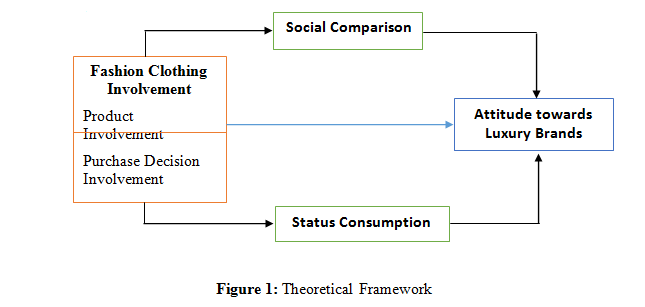
Kruskal - Wallis Test: The Kruskal–Wallis one-way analysis of variance by ranks (named after William Kruskaland W. Allen Wallis) is a non-parametric method for testing whether samples originate from thesame distribution. It is used for comparing more than two samples that are independent, or notrelated.
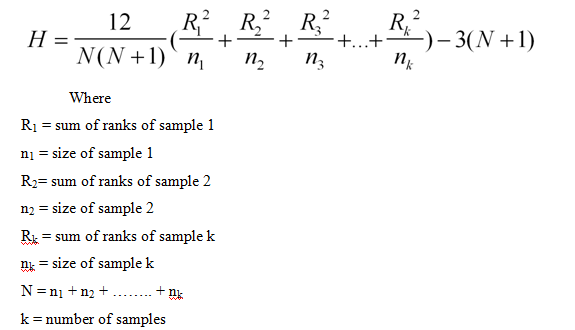
|
Variables |
Description |
|
Predictor Variables |
|
|
Size of the family (FAMSIZE) |
Family size |
|
Monthly Expenditure (MONEXP) |
Monthly Expenditure of the Household |
|
Wait days (WAITDAYS) |
Maximum No. of days waited by the household for payment |
|
Other Expenditure (OTHEREXP) |
No. of Days of Employment in a year other than MGNREGA |
|
Distance |
Distance (in Kms from village to the work place) |
|
Land |
Land holding of the household |
|
Mobile |
Whether the household owns mobile set |
MGNREGA: Key indicators - At a Glance from 2006 - 07 to 2012 - 13
The MGNREGA has been implemented in phases, commencing from February 2006, and at present it covers all districts of the country with the exception of those that have a 100% urban population. The Act provides a list of works that can be undertaken to generate employment related to water conservation, drought proofing, land development, and flood control and protection works.
Table 1shows the annual growth rate (AGR) and compound annual growth rate (CAGR) for number of households provided employment, average number of person days of work per household and total expenditure, under MGNREGA from 2006 – 07 to 2012 – 2013. It shows that the AGR for number of households provided employment in the year 2007 – 08 was 61.43%; gradually it was decreasing over the years and recorded negatively in the year 2012 – 13 i.e., -14.83%. The CAGR over the years for number of households provided employment is positive (0.11), indicating that the number of households provided employment goes on increasing at a normal rate without any fluctuation. The AGR for average number of person days per households in the year 2007 – 08 was -2.33 and has been fluctuating over the years and goes negatively for the last three years, finally in the year 2012 – 13 it was -16.28, recording a great fluctuation, the CAGR is negative (-0.03) over the period of study. The AGR for total expenditure in the year 2007 – 08 was 79.71%; gradually it was decreasing over the years and goes negatively in the year 2012 – 13 i.e. -26.19. The CAGR is positive (0.18) for total expenditure incurred over the study period.The total expenditure incurred per household during the year 2007 – 2008 was `8823.35 lakh, it has been increasing over the years and has been decreasing in the last two years, recording ` 38034.69 lakh and ` 28073.51 lakh respectively.
Table 1 MGNREGA: Key indicators - At a Glance from 2006 - 07 to 2012 - 13
|
Year |
Number of households provided employment (in Rcrore) |
AGR |
Average number of person days of work per household |
AGR |
Total Expenditure (in R lakh) |
AGR |
|
2006-07 |
2.10 |
- |
43 |
- |
8823.35 |
- |
|
2007-08 |
3.39 |
61.43 |
42 |
-2.33 |
15856.88 |
79.71 |
|
2008-09 |
4.51 |
33.04 |
48 |
14.29 |
27250.10 |
71.85 |
|
2009-10 |
5.25 |
16.41 |
54 |
12.50 |
37905.23 |
39.10 |
|
2010-11 |
5.49 |
4.57 |
47 |
-12.96 |
39377.27 |
3.88 |
|
2011-12 |
4.99 |
-9.11 |
43 |
-8.51 |
38034.69 |
-3.41 |
|
2012-13 |
4.25 |
-14.83 |
36 |
-16.28 |
28073.51 |
-26.19 |
|
CAGR |
0.11 |
-0.03 |
0.18 |
|||
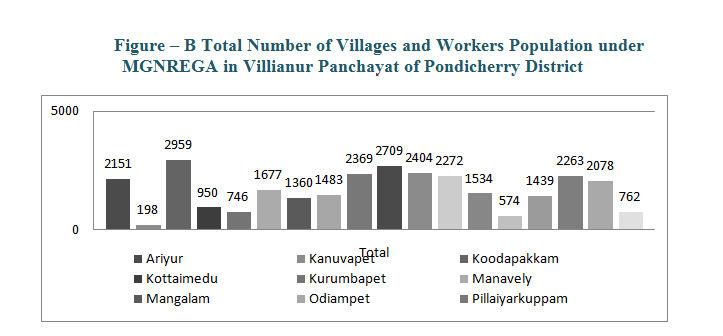
Sampling Technique
Systematic Random Sampling Technique
Systematic samplingtechnique is astatistical methodinvolving the selection of elements from an orderedsampling frame. The most common form of systematic sampling is an equal-probability method, in which everykthelement in the frame is selected.
The formula for calculating the sample interval is:
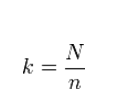
Wherek is the sampling interval (SI),Nis the population size, and nis the sample size. In this case N is 29,928 and n is 1,300, when calculated the sample internal is (approximately) ≈ 23. Using this procedure, each element in the population has a known and equal probability of selection. This makes systematic sampling functionally similar tosimple random sampling.
This is random sampling with a system. The ultimate sample respondents are to be selected by adopting Systematic Random Sampling Technique where the sample interval (SI) = 29928 / 1300 = 23.02 = (approximately) ≈ 23. The first sample respondent is selected by simple random sampling technique, i.e. by lottery method, and the every other sample respondents are selected by adopting the systematic random sampling technique, keeping the SI as 23, i. e., the first sample respondent being 3rd in the population list, the second sample respondent is (3+23) = 26h in the list and so on.
Demographic Profile of the Workers
Figure – C Gender and Age of the Workers Employed under MGNREGA
in Villianur Block

Figure - C shows the demographic profile of the respondents viz., gender and age. Out of 1300 workers, 268 (20.62%) are male and 1032 (79.38%) are female. Out of 268 male respondents, 60 (22.38%) fall under the age group of upto 40 years, 56 (20.90%) fall in the age category of 40-60 years and 152 (56.72%) fall in the age category of >60 years. Out of 1032 female respondents, 368 (35.66%) fall under the age group of upto 40 years, 476 (46.12%) fall under 40-60 years category and 188 (18.22%) of them fall in >60 years category.
Figure - D shows the demographic profile of the workers viz gender and educational status. Out of 1300 respondents, 44 (17.32%) male and 210 (82.68%) female workers know to read and write, 47 (82.46%) male and 10 (17.54%) female workers have education up to primary level, 14 (51.85%) male and 13 (48.15%) female workers have education upto SSLC, 10 (47.62%) male and 11 (52.38%) female workers have education upto HSC respectively, and 153 (16.26%) male and 788 (83.74%) female workers fall under the education category of ‘others’.
Figure – D Gender and Educational level of the Workers Employed under MGNREGA in Villianur Block
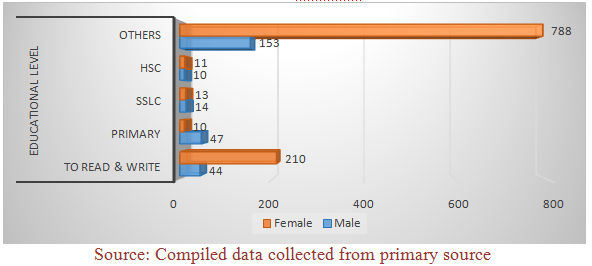
Table 3indicates the gender with the highest mean rank is considered as having the higher participation in MGNREGS. In this case, the female has the highest mean rank in socio - economic determinants like family size, wait days, monthly expenditure, distance from the work place, other expenditure, owning of land and mobile phone by the respondents. It shows that female workers have higher participation in MGNREGS than the male workers.
Table 3 Ranks for Gender and Socio Economic Determinants of Participation in MGNREGS
|
Variables |
Gender |
N |
Mean Rank |
Sum of Ranks |
|
FamSize |
Male |
268 |
296.16 |
79370.50 |
|
Female |
1032 |
742.52 |
766279.50 |
|
|
Wait Days |
Male |
268 |
298.09 |
79888.00 |
|
Female |
1032 |
742.02 |
765762.00 |
|
|
MonExp |
Male |
268 |
204.91 |
54916.00 |
|
Female |
1032 |
766.22 |
790734.00 |
|
|
Distance |
Male |
268 |
650.50 |
174334.00 |
|
Female |
1032 |
650.50 |
671316.00 |
|
|
OtherExp |
Male |
268 |
385.25 |
103246.00 |
|
Female |
1032 |
719.38 |
742404.00 |
|
|
Land |
Male |
268 |
385.22 |
103238.00 |
|
Female |
1032 |
719.39 |
742412.00 |
|
|
Mobile Phone |
Male |
268 |
546.50 |
146462.00 |
|
Female |
1032 |
677.51 |
699188.00 |
|
Source: Computed data collected from primary source.
Table 4 provides test statistic,Ustatistic, as well as the asymptotic significance (2-tailed). It shows that the gender towards socio - economic determinants like family size (U = 43324.50, P = .000), wait days (U = 43842, P = .000), monthly expenditure (U = 18870, P = .000) other expenditure (U = 67200, P = .000), land (U = 67192, P = .000) and mobile phone (U = 110416, P = .000)of the female respondents. Hence, H01 is rejected; there is a significant difference in the gender about the socio - economic determinants of participation in MGNREGS.
Table 4 Results of Mann Whitney U- Test for Gender and Socio - Economic Determinants of Participation in MGNREGS
|
Variables |
Famsize |
Wait Days |
Mon Exp |
Distance |
Other Exp |
Land |
Mobile Phone |
|
Mann-Whitney U |
43324.50 |
43842.00 |
18870.00 |
138288.00 |
67200.00 |
67192.00 |
110416.00 |
|
Wilcoxon W |
79370.50 |
79888.00 |
54916.00 |
671316.00 |
103246.00 |
103238.00 |
146462.00 |
|
Z |
-18.359 |
-18.248 |
-23.083 |
.000 |
-16.965 |
-15.151 |
-8.016 |
|
Asymp. Sig. (2-tailed) |
.000 |
.000 |
.000 |
1.000 |
.000 |
.000 |
.000 |
Source: Computed data collected from primary source.
Table 5 Ranks for Age and Socio Economic Determinants of Participation in MGNREGS
|
Variables |
Age |
N |
Mean Rank |
|
FamSize |
20-40 |
428 |
440.34 |
|
40-60 |
532 |
808.43 |
|
|
>60 |
340 |
667.94 |
|
|
MonExp |
20-40 |
428 |
454.45 |
|
40-60 |
532 |
774.07 |
|
|
>60 |
340 |
703.94 |
|
|
Wait Days |
20-40 |
428 |
444.07 |
|
40-60 |
532 |
810.95 |
|
|
>60 |
340 |
659.31 |
|
|
Distance |
20-40 |
428 |
650.50 |
|
40-60 |
532 |
650.50 |
|
|
>60 |
340 |
650.50 |
|
|
Other Exp |
20-40 |
428 |
584.50 |
|
40-60 |
532 |
825.55 |
|
|
>60 |
340 |
459.68 |
|
|
Land |
20-40 |
428 |
424.29 |
|
40-60 |
532 |
786.77 |
|
|
>60 |
340 |
722.03 |
|
|
Mobile Phone |
20-40 |
428 |
546.50 |
|
40-60 |
532 |
905.94 |
|
|
>60 |
340 |
341.91 |
Source: Computed data collected from primary source.
Table 5 indicates the age group – wise participation of workers in MGNREGS.It shows that the age group between 40-60 years has the highest mean rank in socio - economic determinants like family size, wait days, monthly expenditure, distance, other expenditure, owning of land and mobile phone by the respondents. It shows that the workers belong to age group of 40-60 years have higher participation in MGNREGS than the workers in the other categories of age.
|
Table 6 Results of Kruskal Wallis Tests for Age and Socio Economic Determinants of Participation in MGNREGS |
|||||||
|
Variables |
Famsize |
MonExp |
Wait Days |
Distance |
OtherExp |
Land |
Mobile Phone |
|
Chi-Square |
256.63 |
203.04 |
253.82 |
.000 |
370.12 |
323.86 |
531.02 |
|
df |
2 |
2 |
2 |
2 |
2 |
2 |
2 |
|
Asymp. Sig. |
.000 |
.000 |
.000 |
1.000 |
.000 |
.000 |
.000 |
|
Source: Computed data collected from primary source. |
|||||||
|
|
|||||||
Table 6 provides Chi-Square and significance (p-value). It shows that age towards socio - economic determinants like family size (c2 = 256.63, P = .000), monthly expenditure (c2 = 203.04, P = .000), wait days (c2 = 253.82, P = .000), other expenditure (c2 = 370.13, P = .000),owning of land (c2 = 323.86, P = .000) and mobile phone(c2 = 531.02, P = .000) by the respondents significantly vary. Hence, H02 is rejected, there is a significant difference in the age towards the socio - economic determinants of participation in MGNREGS.
Table 7 Ranks for Educational level and Socio Economic Determinants of Participation in MGNREGS
|
Variables |
Educational level |
N |
Mean Rank |
|
FamSize |
To read & write |
256 |
290.34 |
|
Primary |
52 |
369.58 |
|
|
SSLC |
24 |
169.54 |
|
|
HSC |
24 |
345.75 |
|
|
Others |
944 |
783.62 |
|
|
MonExp |
To read & write |
256 |
331.92 |
|
Primary |
52 |
278.00 |
|
|
SSLC |
24 |
160.00 |
|
|
HSC |
24 |
323.33 |
|
|
Others |
944 |
778.20 |
|
|
Wait Days |
To read & write |
256 |
292.00 |
|
Primary |
52 |
373.12 |
|
|
SSLC |
24 |
172.08 |
|
|
HSC |
24 |
349.67 |
|
|
Others |
944 |
782.81 |
|
|
Distance |
To read & write |
256 |
650.50 |
|
Primary |
52 |
650.50 |
|
|
SSLC |
24 |
650.50 |
|
|
HSC |
24 |
650.50 |
|
|
Others |
944 |
650.50 |
|
|
Other Exp |
To read & write |
256 |
517.97 |
|
Primary |
52 |
584.50 |
|
|
SSLC |
24 |
317.50 |
|
|
HSC |
24 |
317.50 |
|
|
Others |
944 |
707.01 |
|
|
Land |
To read & write |
256 |
410.53 |
|
Primary |
52 |
278.50 |
|
|
SSLC |
24 |
603.50 |
|
|
HSC |
24 |
603.50 |
|
|
Others |
944 |
738.46 |
|
|
Mobile Phone |
To read & write |
256 |
566.81 |
|
Primary |
52 |
546.50 |
|
|
SSLC |
24 |
546.50 |
|
|
HSC |
24 |
546.50 |
|
|
Others |
944 |
684.21 |
Source: Computed data collected from primary source.
Table 7 indicates that the respondents who have high educational level with the highest mean rank are considered as having the high participation in MGNREGS. It shows that the educational category ‘others’ has the highest mean rank towards socio - economic determinants like family size, wait days, monthly expenditure, distance, other expenditure, owning of land and mobile phone by the respondents. Therefore, the workers belong to educational category ‘others’ have higher participation in MGNREGS than the respondents who fall under other categories of educational levels.
Table 8 Results of Kruskal Wallis Tests for Age and Socio Economic Determinants of Participation in MGNREGS
|
Variables |
Famsize |
MonExp |
Wait Days |
Distance |
OtherExp |
Land |
Mobile |
|
Chi-Square |
491.54 |
452.56 |
485.21 |
.000 |
158.24 |
283.55 |
69.46 |
|
df |
4 |
4 |
4 |
4 |
4 |
4 |
4 |
|
Asymp. Sig. |
.000 |
.000 |
.000 |
1.000 |
.000 |
.000 |
.000 |
Source: Computed data collected from primary source.
Table 8provides the Chi-Square and significance (p-value), which shows that socio - economic determinants like family size (c2 = 491.54, P = .000), monthly expenditure (c2 = 452.56, P = .000), wait days (c2 = 485.21, P = .000), other expenditure (c2 = 158.24, P = .000),owning of land (c2 = 283.55, P = .000) and mobile phone (c2 = 69.46, P = .000) by the respondents differ significantly in the educational level. Hence, H03 is rejected, “there is a significant difference in the educational level in respect of socio - economic determinants of participation in MGNREGS”.
Concluding Remarks and Policy Prescriptions
MGNREGS is the most significant scheme to uplift the overall quality of life of rural households from the extreme poverty.The socio - economic determinants of participation of workers in MGNREGS identify the crucial factors for the successful implementation of the programme.Women have more concentration in MGNREGS than that of the men. The female workers have the highest mean rank in socio - economic determinants like family size, wait days, monthly expenditure, distance, other expenditure, owning of land and mobile phone by the respondents. Among the beneficiaries, workers belong to age group of 40-60 years have higher participation in MGNREGS than those who belong to the other age categories; and the workers who fall under educational level ‘others’ have higher participation in MGNREGS than those who fall under other categories of educational levels.
Limitations of the Study
The study is based on the responses of 1300 respondents only that too of the 18 villages of Villianur Panchayat of Pondicherry region,which is the most populated panchayat among the two panchayats of villianur block of the Pondicherry region as far as the MGNREGA is concerned, hence the outcome of the research may not represent the picture prevalent elsewhere, especially in the other regions of Pondicherry Union Territory.
Suggestions for ProperImplementation of MGNREGA
Women’s participation in Gram Sabhas is to be increased as they become more aware of their citizenship rights and duties.
Delay in conducting periodic social audit programmes to judge the workings of the beneficiaries and to monitor the functioning of the scheme is also a pitfall of the Scheme. Hence, it is suggested that the scheme should ensure periodic social audit to assess the performance of the machineries involved in making the Scheme a vibrant and effective one.
The programme could have a greater impact on poverty reduction and on development if there were broader understanding of the nature of poverty, and especially the constraints faced by women. The programme needs to find ways and means of improving its relevance to the daily lives of people (especially women) and addressing ecological poverty, not just income poverty, through suitable modifications to programme design.
Scope for Further Studies
Further studies could be undertaken in the following aspects:
Azhagaiah, R., and G. Radhika. (2014). Impact of MGNREGA on the economic well – being of Unskilled workers: Evidence from Puducherry Region. Pacific Business Review International, 6 (10) (April): 1-15.
http://stats.stackexchange.com/questions/77359/mann-whitney-u-test-with-very-large- sample-size
http://www.prsindia.org/theprsblog/?p=3013
http://www.slideshare.net/mhsgeography/mann-whitney-u-test-2880296
Kar, S. (2013). Empowerment of women through MGNREGS: Issues and Challenges.Odisha Review, (February – March): 76-80.
Khera, R., and N. Nandini.(2009). Women workers and perceptions of the National Rural Employment Guarantee Act in India. Gender Pathways of poverty Rural Employment Discussion Paper: 1-19.
Roy, S., and B. Singh. (2010). Impact of NREGA on Empowerment of the Beneficiaries in West Bengal. Indian Research Journal Extension Education, 10 (2): 20-3.
Sankaran, K. (2011). NREGA Wages: Ensuring Decent Work. Economic& Political Weekly, XLVI (7): 23-5.
Shihabudheen, N. (2013). Potential of MGNREGA in empowering rural women: some preliminary evidence based on a field study in Ernakulam district in Kerala, India. International Journal of Innovative Research and Development, 2 (8) (August): 272-78.
Siddhartha, and A. Vanaik. (2008). CAG Report on NREGA: Fact and Fiction.Economic& Political Weekly, 43 (25): 39-45.
Tiwari, R., H. I. Somashekhar, V. R. Ramakrishna Parama, Indu K. Murthy, M. S. Mohan Kumar, B. K. Mohan Kumar, H. Parate, M. Varma, S. Malaviya, A. S. Rao, A. Sengupta, R. Kattumuri, and N.H. Ravindranath. (2011). MGNREGA for environmental service enhancement and vulnerability reduction: rapid appraisal in Chitradurga District, KarnatakaEconomic& Political Weekly, XLVI (20): 39-45.